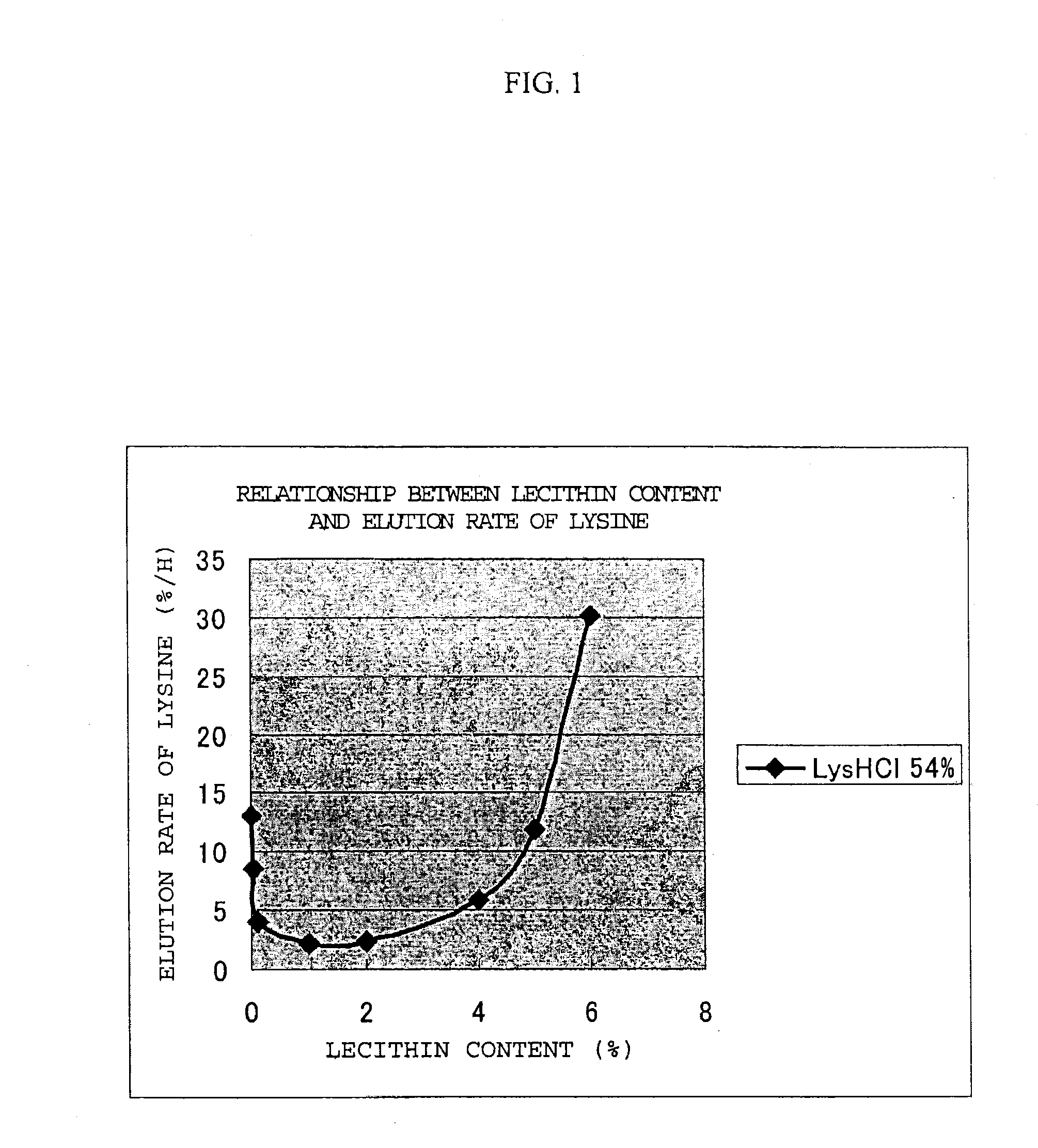Feed additive composition for ruminants containing acidic or neutral amino acid, and method for production thereof
a technology of acidic or neutral amino acids and additive compositions, which is applied in the field of feed additive compositions for ruminants, can solve the problems of ineffective prevention of amino acid loss in dispersion-type preparations, insufficient utilization of nutrients by microorganisms, and inability to achieve the effect of reducing the content of acidics, increasing the production amount of feed additive compositions, and enhancing milk production
- Summary
- Abstract
- Description
- Claims
- Application Information
AI Technical Summary
Benefits of technology
Problems solved by technology
Method used
Image
Examples
example 1
[0053]In a 1 liter vessel made of stainless steel, 410 g of fully hydrogenated soybean oil (melting point 67° C.; manufactured by Yokozeki Oil & Fat Industries Co., Ltd.) and 10.0 g of soybean lecithin (manufactured by Ajinomoto Co., Inc.) were weighed, and the mixture was heated to 85° C. while mixed on a plate heater. Thus, a solution at 85° C. formed by fusing fully hydrogenated soybean oil and soybean lecithin was prepared. Subsequently, the amino acids for medical use indicated in Table 1, which had been pulverized, were each continuously introduced into the solution (85° C.), in small portions in a heated state (85° C.) while the mixture was sufficiently mixed. When the limit at which the molten slurry of amino acid can form liquid droplets (rotational viscosity of slurry 5 Pa·s / 85° C.) was reached, the introduction of the amino acid was stopped. Subsequently, this molten slurry of amino acid was placed in a multi-hole shooter (number of holes: 30, diameter of hole: 2 mm), and...
PUM
 Login to View More
Login to View More Abstract
Description
Claims
Application Information
 Login to View More
Login to View More - R&D
- Intellectual Property
- Life Sciences
- Materials
- Tech Scout
- Unparalleled Data Quality
- Higher Quality Content
- 60% Fewer Hallucinations
Browse by: Latest US Patents, China's latest patents, Technical Efficacy Thesaurus, Application Domain, Technology Topic, Popular Technical Reports.
© 2025 PatSnap. All rights reserved.Legal|Privacy policy|Modern Slavery Act Transparency Statement|Sitemap|About US| Contact US: help@patsnap.com

